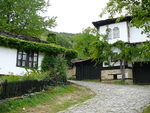Gabrovo
| Gabrovo Габрово |
|||
|---|---|---|---|
 |
|||
|
|||
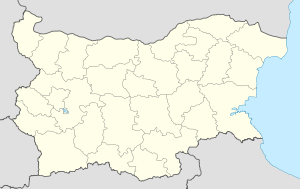 Gabrovo
|
|||
| Coordinates: | |||
| Country | |||
| Province (Oblast) |
Gabrovo | ||
| Government | |||
| - Mayor | Tomislav Donchev | ||
| Elevation | 392 m (1,286 ft) | ||
| Population (2007-12-15) | |||
| - Total | 67,012 | ||
| Time zone | EET (UTC+2) | ||
| - Summer (DST) | EEST (UTC+3) | ||
| Postal Code | 5300 | ||
| Area code(s) | 066 | ||
Gabrovo (Bulgarian: Габрово) is a town in central northern Bulgaria, the administrative centre of Gabrovo Province. It is situated at the foot of the central Balkan Mountains, in the valley of the Yantra River, and is known as an international capital of humour and satire (see Gabrovo humour), as well as noted for its Bulgarian National Revival architecture. Gabrovo is also known as the longest town in Bulgaria, stretching over 25 km along the Yantra, yet reaching only 1 km in width at places. Near Gabrovo is located the geographic center of Bulgaria - Uzana.
Contents |
History
The area around Gabrovo, inhabited since the Neolithic, gained economic importance after Veliko Tarnovo became capital of the Second Bulgarian Empire in the 12th century. Craftsmanship and trade prospered due to the proximity to both the capital and the Balkan passes. Medieval Gabrovo was a small pass village of about 100 houses.
According to the most widespread legend, Gabrovo was founded by a young blacksmith called Racho, close to whose fireplace a hornbeam (габър, gabar in Bulgarian) rose, so the settlement acquired its name.
After the Ottoman invasion of the Balkans in the 14th century, the demographic position of Gabrovo changed significantly, as it was the only settlement in a considerably large geographic area and an attractive place for Bulgarians fleeing from the conquered capital and neighbouring fortresses. It turned from a village into a small town (palanka) and began to develop as an economic, cultural and spiritual centre.

During Ottoman rule, the rich tradesmen spent plenty of resources for the small town's public planning. The first Bulgarian secular school, the Aprilov Gymnasium, was founded in Gabrovo in 1835 with the aid of Vasil Aprilov and Nikolay Palauzov. Gabrovo was officially proclaimed a town by the Ottoman authority in May 1860.
Shortly before and after the Liberation of Bulgaria in 1878, Gabrovo developed as a centre of industry on the basis of its economic traditions. Joint-stock companies emerged, factories were constructed and connections to the large stock exchanges were created, prompting some to label the town "The Bulgarian Manchester".

It is hard not to notice that this is the longest town in Bulgaria. With the amazing 28 km (this is a lot for Bulgaria, the Capital Sofia is only 21 km long), Gabrovo represent the past, the "now" and the future of the country. Recently the town won one of the biggest prices in the biggest National survey for "The best living town in Bulgaria" - Gabrovo won the "Greenest (Eco) city" and became 2nd in the readers contest. For more information you can see - dariknews.bg. Also Gabrovo is the town with most monumental statues - more than 14 000. The "city" also has an opportunity for business development. The Gabrovo Municipality Agenda says that Gabrovo has an BB+ credit raiting.
Culture
Internationally known as a centre of humour and satire, Gabrovo has two theatres, the Racho Stoyanov Drama Theatre and the puppet theatre, a House of Humour and Satire that serves as a cultural institute, a centre, museum and gallery to popularise comic art. There is also a cinema, Aleko Cinema, and a number of museums and menorial houses both in the town and around it, most notably the Etar Architectural-Ethnographic Complex and the National Museum of Education at the Aprilov Gymnasium. A planetarium is also in operation. Gabrovo is twinned with the Belgian town of Aalst and Mogilev in Belarus.
Tourism

Places of interest in Gabrovo include House of Humour and Satire and Aprilov High School. In Gabrovo Province sites include architectural reserve Bozhentsi. Hiking is widely available in the Central Balkan National Park and in the Bulgarka Nature Park, itself home to Ethnographic Complex Etara, Dryanovo Monastery, Sokolski Monastery, Shipka Pass, and the Uzana area. For admirers of historical tourism Shipka Memorial is a must-see.
Sports
- City's most successfully sports club is FC Yantra Gabrovo, which was founded in 1919.
- The city also has long handball traditions.
- About 25 km from the city in Central Balkan Mountains is located the renowned winter resort Uzana.
Honors
A minor planet 2206 Gabrova discovered on April 1, 1976 by Soviet astronomer Nikolai Stepanovich Chernykh is named in honor of the city.[1]
Gabrovo Knoll on Livingston Island in the South Shetland Islands, Antarctica is named after Gabrovo.
Notable natives
- Chardafon (Prodan Tishkov)
- Christo Yavashev
- Ran Bosilek
- Emanuil Manolov
- Vasil Aprilov
- Tsanko Dyustabanov
- Lazar Payakoff
- Lyubomir Andreychin
- Svilen Noev
- Nikolay Palauzov
- Ivan Vutsov
- Dora Boneva
- Lalyu Metev
- Onufri Gabrovski
- Ivan Gyuzelev
- Captain grandfather Nikola
- Mintcho Mintchev
- Mitko Palauzov
- Nikola Voynovski
- Nikolay Stoletov
- Hristo Tsokev
- Zvetelina Stantcheva
Gallery
|
View of Gabrovo from Stara planina |
The Aprilov Gymnasium |
 The clock tower |
The Etar |
 Russian monument |
Saint Trinity church |
 Dormition of the Most Holy Theotokos church |
 |
|
The Etar |
The Etar |
 |
 |
International relations
Twin towns — Sister cities
Gabrovo is twinned with:
 Thun, Switzerland
Thun, Switzerland Mytischi, Russia
Mytischi, Russia Mahilyow, Belarus
Mahilyow, Belarus Shaki, Azerbaijan
Shaki, Azerbaijan.svg.png) Aalst, Belgium
Aalst, Belgium Mittweida, Germany
Mittweida, Germany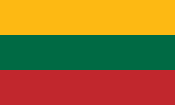 Panevėžys, Lithuania
Panevėžys, Lithuania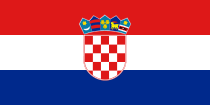 Sisak, Croatia
Sisak, Croatia Nowy Sącz, Poland
Nowy Sącz, Poland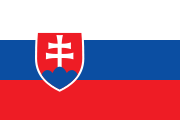 Preshov, Slovakia
Preshov, Slovakia
See also
- Gabrovo humour and jokes
- Ethnographic museum Etara
- Village of Bozhentsi
- City of Tryavna
- City of Dryanovo
- Dryanovo Monastery
- Sokolski Monastery
- Shipka Memorial
- Winter Resort Uzana
- Prodan Tiskov - Chardafon
- Football Club Yantra Gabrovo
- Bulgarka Nature Park
References
- ↑ Schmadel, Lutz D. (2003). Dictionary of Minor Planet Names (5th ed.). New York: Springer Verlag. pp. 179. ISBN 3540002383. http://books.google.com/books?q=2206+Gabrova+GR3.
External links
- House of Humour and Satire in Gabrovo
- Astronomical Observatory and Planetarium Gabrovo
- Gabrovo tourist information
- Gabrovo municipality's home page
- Cities, villages and regions in Gabrovo district
- Pictures from Gabrovo
- Interesting facts, maps and many useful information about Gabrovo and region.Internet portal of Gabrovo and region
- Virtual Gabrovo
- PTG "Dr. Nikola Vasiliadi" High School Gabrovo
- Gabrovo Technical University
 |
Lovech | Sevlievo | Veliko Tarnovo |  |
| Troyan | Tryavna | |||
| Karlovo | Kazanlak | Sliven |
|
|||||
|
||||||||||||||||||||||||||||
|
||||||||||||||||||||



